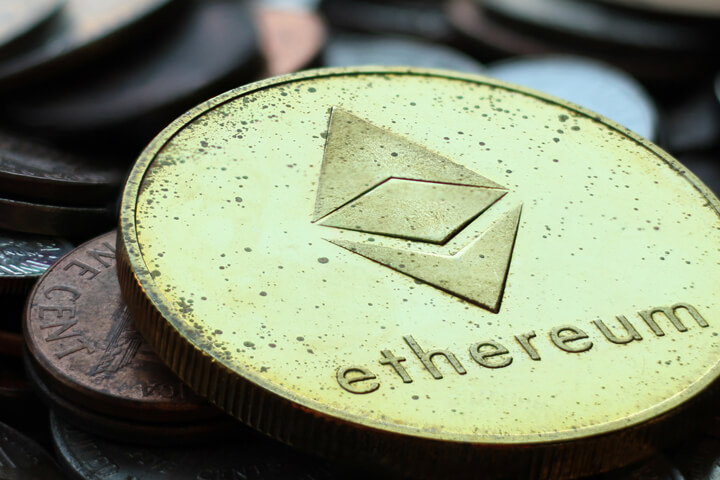Credit: QuoteInspector.com
They’ve been popularised by a diverse crowd ranging from Aphex Twin to Elon Musk – but are non-fungible tokens a force for good which will level the art world’s financial playing field, or the polar opposite?
In the past few months, there’s been a sea change in how the general population views the world’s financial movers and shakers. As a response to the increase in overall CEO wealth, a band of Reddit users worked together to short the stock of GameStop, a U.S-based video game retailer.
It’s no surprise, then, that online culture has devised a method of financial transaction which attempts to take money out of the hands of wall street hedge fund managers and into the hands of everyday people.
On March 11th, Beeple, a digital artist from South Carolina, made history: he was the first person to sell an NFT, or a non-fungible token, through major art dealer Christie’s, propelling the phenomenon into mainstream Internet culture.
Let’s dive into the phenomenon.
What is cryptocurrency?
At its core, non-fungible tokens are a development in the cryptocurrency craze. The most popular type at the moment is Bitcoin, and the term is often used interchangeably with cryptocurrency.
Basically, it’s an electronic currency, similar to the debit you would have on a bank card, only it exists exclusively on a computer. It can be converted to cash, and the conversion rate tends to inflate and deflate quite rapidly, giving the business a similar feel to gambling for its users – part of the thrill comes from deciding whether to risk losing your investment or to cut your losses.
It’s also possible to buy and sell things online using cryptocurrency.
This new type that supports NFTs purportedly democratises the online media landscape, making it so artists can easily retain copyright of their work and buyers can have proof of purchase. The thought behind the latter is that people will be able to demonstrate that they have the ‘original’ as opposed to a copy of the initial non-fungible token, meaning the online market is now more reminiscent of the traditional art industry.
Why do people use NFTs?
Beeple has been in the game for a while. He sold his first NFT in October 2020, and since then, the phenomenon has increased considerably in popularity. Kings of Leon released their first album in four and a half years, When You See Yourself, as an NFT on 5 March.
Last weekend, Aphex Twin, a Cornish electronic musician, auctioned a piece of visual art – with music by himself and visuals by Weirdcore, who has created visuals for various artists, including the Sri Lankan musician M.I.A – through Twitter.
“We will spend a portion of the money on planting trees and either donating to permaculture projects or setting them up ourselves, depending on how much we get,” he said.
What’s the issue with NFTs?
Although NFT trading is in its infancy, there are concerns about the impact they will have on the environment. Before being sold, a piece of art is converted into an NFT through a cryptocurrency called Ether, which is distributed through a Blockchain called Etherum (a Blockchain is essentially a digital ledger).
It works in a similar way to an MP3 or a GIF file; the difference between an NFT and a traditional file is that the latter provides the buyer with a unique token of authenticity, proving it’s the original.
This is done through a process called ‘Proof of Work Validation,’ which requires a series of puzzles to be solved in order to validate the transaction. This process uses a considerable amount of energy and is intentionally costly: a proof of work process uses an extremely large amount of electricity, making it expensive, and is used for two reasons. The first is to deter scammers from utilising the method to steal goods (after all, the point of theft is to make money, not lose it), and the second is to ensure that both the buyer and seller have proof the purchase took place – like a shop receipt.
[infogram id=”double-comparison-1hxr4zx7yvdwq6y?live”]
The process is controversial because of the amount of greenhouse gases it produces. A single transaction produces 62.56 kWh – equivalent to the power consumption of an average U.S household over around two days. However, Ethereum themselves claim that NFTs do not increase the cryptocurrency’s carbon footprint – in fact, they claim as the method is revised and improved, its carbon footprint will decrease by 99.98%.
Ethereum claims that an alternative to its Proof-of-Work method, named Proof-of-Stake, will reduce the environmental impact of trading NFTs through the service, though there is currently very little data to support this.
Maxwell Ayamba, Msc, Project co-ordinator for the Sheffield Environmental Movement, said: “I’m going to speak in terms of relevance with groups i work with, with regards to knowledge and awareness of NFTs, and as a result of that, how NFTs really impact on the environment in the perception of the groups I work with. Because what I want to point out is that there are a lot of things going on that people are not aware of. If you go out on the street and you interview people… they aren’t going to know what they are. The only people aware of NFTs are people within that particular culture.”
Do NFTs have a future?
Much of the culture surrounding NFT sales is to do with exclusivity. After all, if you can pay slightly less for a reproduction of the same thing, there doesn’t seem like much benefit to owning the original aside from retaining bragging rights.
Ultimately, as it stands, the only tangible benefit for most artists – ones who aren’t earning the big bucks – is that they can retain ownership of their work. The advent of NFTs is nothing more than a reproduction of the bourgeois art market in online spheres. The purveyors of NFTs need to ask themselves: is the environmental damage worth it?





